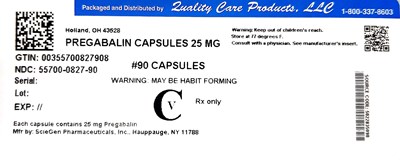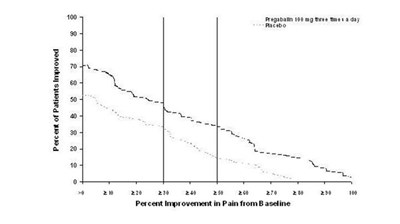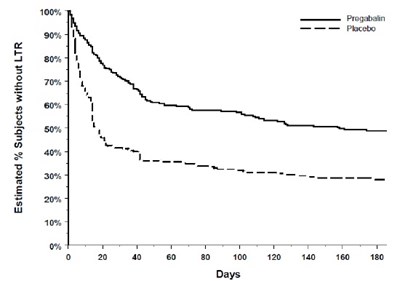Product Images Pregabalin
View Photos of Packaging, Labels & Appearance
- image description - New Doc 2020 01 30 08.39.14 1
- Figure 1 - pregabalin fig01
- Figure 2 - pregabalin fig02
- Figure 3 - pregabalin fig03
- Figure 4 - pregabalin fig04
- Figure 5 - pregabalin fig05
- Figure 6 - pregabalin fig06
- Figure 7 - pregabalin fig07
- Figure 9 - pregabalin fig08
- Figure 10 - pregabalin fig09
- Figure 11 - pregabalin fig10
- Figure 12 - pregabalin fig11
- Cockcroft and Gault equation - pregabalin formula
- Chemical Structure - pregabalin str
Product Label Images
The following 14 images provide visual information about the product associated with Pregabalin NDC 55700-827 by Quality Care Products, Llc, such as packaging, labeling, and the appearance of the drug itself. This resource could be helpful for medical professionals, pharmacists, and patients seeking to verify medication information and ensure they have the correct product.
image description - New Doc 2020 01 30 08.39.14 1

This is a warning label for a medication called Pregabalin. It comes in the form of capsules with a dosage of 25 mg. The medication is packaged and distributed by a company located in Helland, OH. The label warns that this medication may be habit-forming, and recommends that it be kept out of reach of children. The lot number and expiration date are also provided. The label includes a GTIN and NDC code for reference.*
Figure 1 - pregabalin fig01

The text seems to contain some numerical values related to the percentage of patients improved and the percentage improvement in pain from baseline. However, the text is not well-organized and contains some symbols, letters, and meaningless characters. Therefore, it is unclear what the text is describing exactly.*
Figure 2 - pregabalin fig02

The text appears to be a chart or a table showing percent improvement in pain from a certain baseline for patients who were given Pregabalin 160 mg for three days. The data has been represented in numbers ranging from 100 to 2 in descending order. However, the timestamps and other values do not provide enough context to form a complete description.*
Figure 3 - pregabalin fig03

This appears to be a chart or graph showing percent of patients improved and percent improvement in pain for various medications, including Pregatalin, Pregabain, and Pregabalin. The numbers shown may represent the percentage of patients who improved while taking the medication or the percentage improvement in pain from a baseline measurement. There is also a label for "Flaosbo" but it is not clear what this refers to.*
Figure 5 - pregabalin fig05

This data represents a comparison between the efficacy of Fregabalin 100mg three times a day, Pregataiin 80mg three times a day, and a placebo in improving pain in patients. The table shows the percentage of patients who reported improvement in pain relief. The last row shows the percentage of improvement in pain relief from the baseline.*
Figure 9 - pregabalin fig08

The text describes a graph that shows the percentage of patients improved with different doses of Pregabalin and placebo. The X-axis represents the percentage improvement in pain from baseline, while the Y-axis shows the different doses of Pregabalin and the placebo. The data suggests that Pregabalin 450mg and Pregabalin 300mg doses have a higher percentage of improvement in patients compared to the placebo, with the 450mg dose having the highest percentage.*
Figure 10 - pregabalin fig09

This appears to be a chart or table showing estimated percentages of subjects without LTR (not defined in the given text). The percentages range from 0% to 100%, with 10% intervals. There are two categories listed: "Progabain" and "Placebo". The bottom row shows "Days" with intervals of 20 up to 120, and then jumps to 160 and 180. It's not clear what the purpose or context of this information is, but it may relate to a medical or scientific study.*
Figure 12 - pregabalin fig11

The text provides a graph with the percent of subjects improved from baseline to week 16 for Pregabalin and Placebo. The y-axis ranges from 0 to 100, and the x-axis includes values from 210 to 270. The percent of improvement for Pregabalin is higher than Placebo at week 16.*
Cockcroft and Gault equation - pregabalin formula

This appears to be a calculation for estimating creatinine clearance (CLCT), a measure of kidney function. It involves subtracting the patient's age from 140 and multiplying the result by their weight in kilograms. For female patients, the result is then multiplied by 0.85. Finally, the result is multiplied by the patient's serum creatinine level in milligrams per deciliter, divided by 72.*
* The product label images have been analyzed using a combination of traditional computing and machine learning techniques. It should be noted that the descriptions provided may not be entirely accurate as they are experimental in nature. Use the information in this page at your own discretion and risk.




